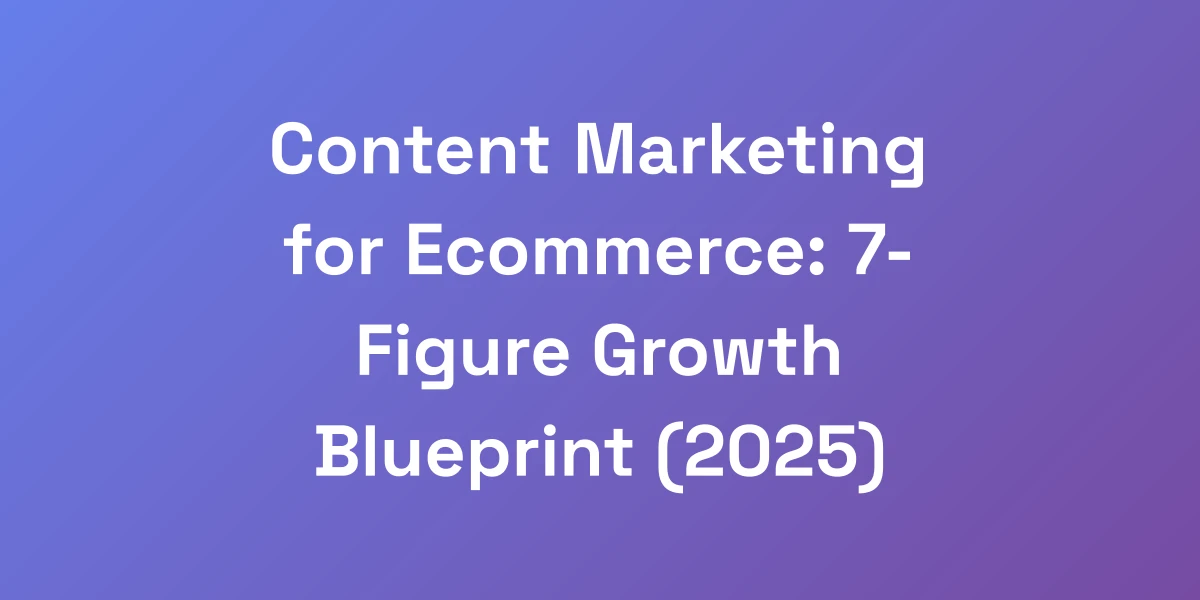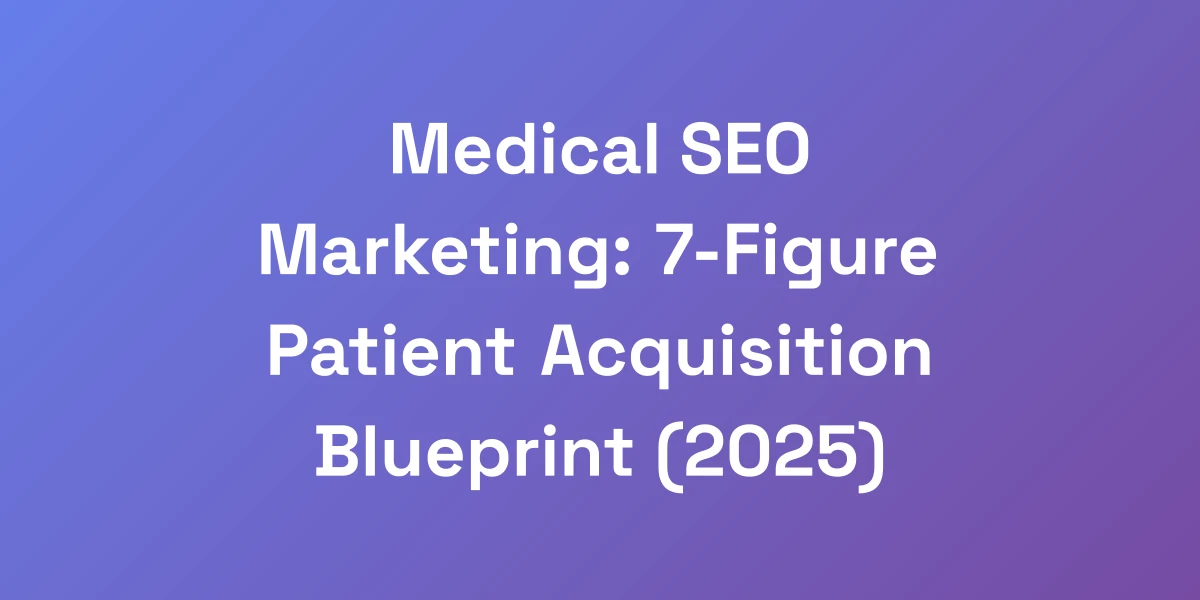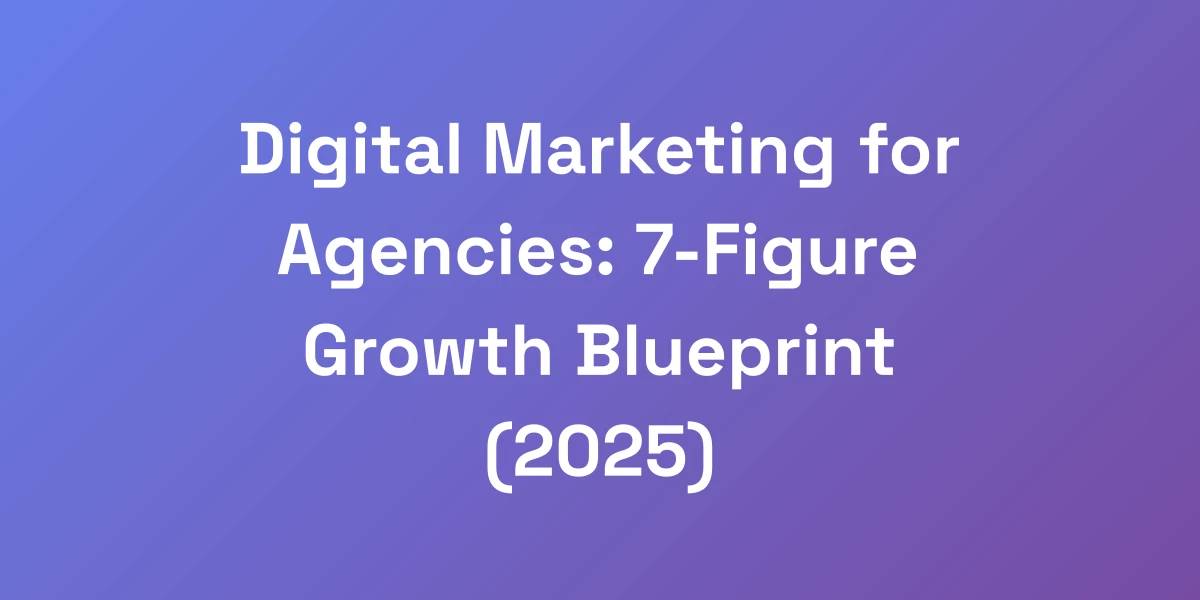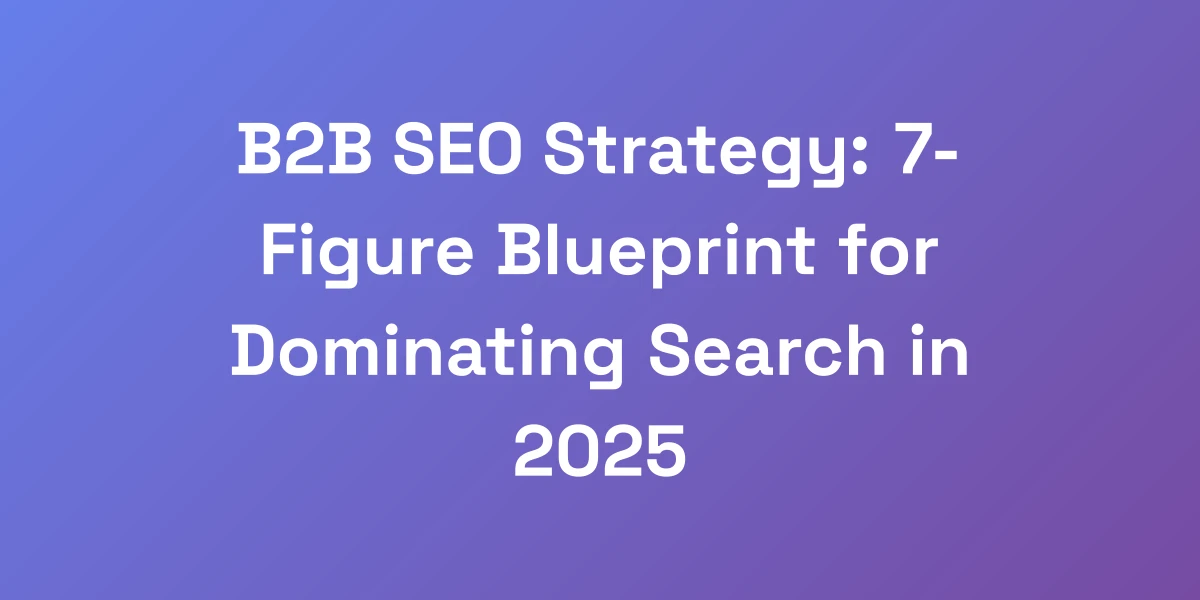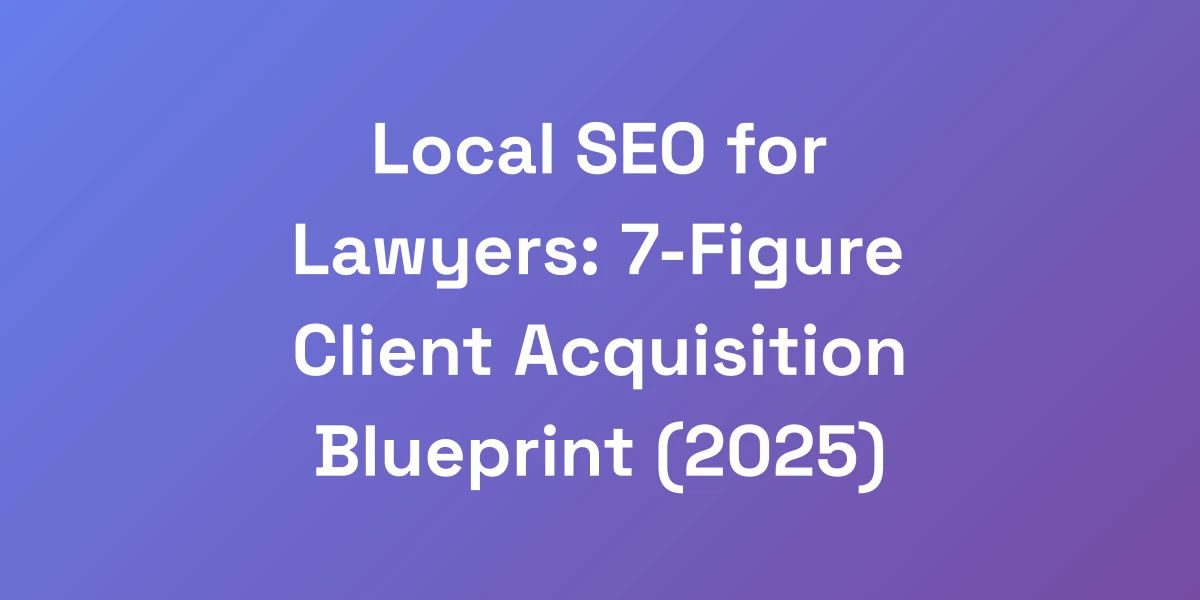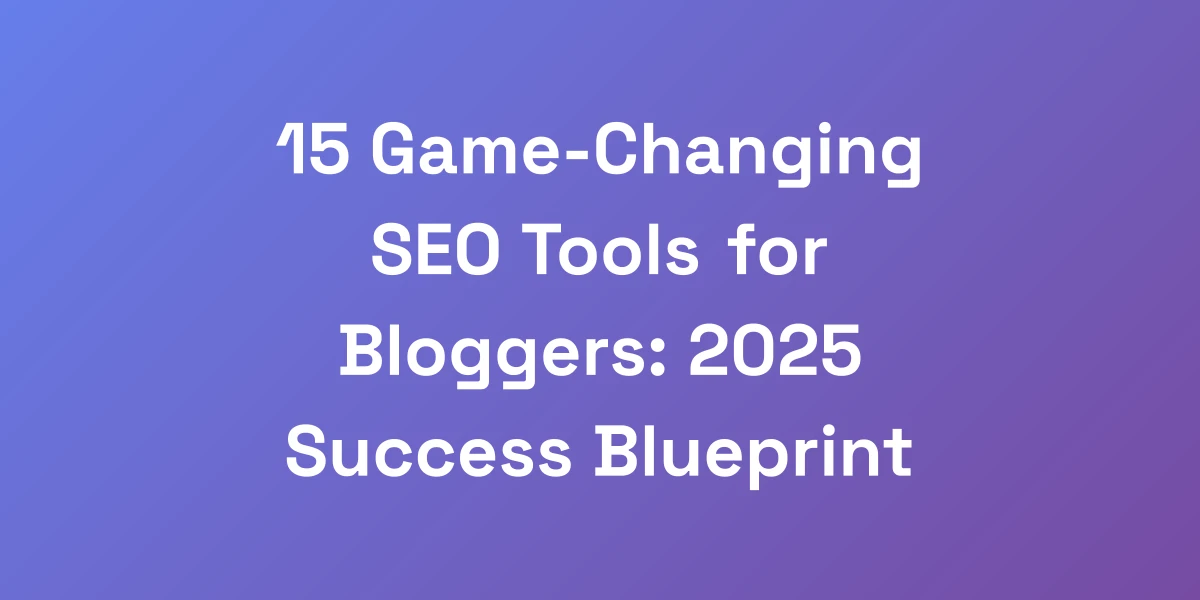
SEO + Affiliate Marketing: 7-Figure Blueprint for 2025 Success
Mar 29, 2025 | By [email protected]
Introduction
Let’s get straight to it—affiliate marketing is a gold mine, but only if you know how to dig. SEO and affiliate marketing aren’t just buzzwords; they’re the dynamic duo that can catapult your earnings to 7 figures by 2025.
But here’s the kicker: most affiliates are stuck using outdated strategies that were effective back in 2015. They’re throwing up random product reviews, hoping to catch a break, and largely missing the mark.
Why? Because the game has fundamentally changed. AI content is flooding the internet, and Google’s algorithm updates are reshaping how search rankings work. If you haven’t adapted, you’re already falling behind.
We’ve built and sold multiple 7-figure affiliate sites, and trust us, the strategies we used aren’t found in any beginner’s guide. This blueprint is battle-tested and working right now, ensuring you stay ahead of your competitors who are still stuck in the past.
The New Reality of SEO and Affiliate Marketing in 2024
Let me cut through the BS right now—most people are doing affiliate marketing completely wrong. They’re stuck in 2015, throwing up random product reviews and hoping for the best. But here’s the truth: the game has fundamentally changed. With AI content flooding the internet and Google’s helpful content update, you need a completely different approach.
I’ve personally built and sold multiple 7-figure affiliate sites, and I’m going to show you exactly how to combine SEO and affiliate marketing in ways your competitors haven’t even thought of. Practical tips for affiliate marketing SEO that are battle-tested and working right now.
Why Traditional Affiliate SEO Is Dead
Traditional SEO for affiliate marketing relied heavily on keyword stuffing, generic product reviews, and an oversaturated content approach. Remember the days when you could rank with minimal effort? That’s long gone.
Google’s recent updates, especially the March 2024 Spam Update, have cracked down on low-quality, AI-generated content. They prioritize authentic, user-focused material over anything that feels forced or manipulative.
So, what does this mean for you? It means abandoning old habits and adopting a more sophisticated, user-centric approach. If your strategy hasn’t evolved, you’re likely invisible in search results.
Think of SEO as a living organism. It adapts, evolves, and changes with time. Clinging to outdated tactics is like trying to run a marathon in flip-flops—you won’t get far.
The Evolution of Search Intent in 2024
Understanding search intent has never been more critical. Google isn’t just matching keywords anymore; it’s deciphering the nuanced intent behind every search query.
In 2024, search intent has evolved to focus on providing comprehensive answers that satisfy the user’s needs. Whether it’s informational, navigational, or transactional, every piece of content must align perfectly with what the user is looking for.
Take a close look at the top-ranking content in your niche. What are they doing differently? They’re not just answering questions; they’re anticipating what the user might need next and providing it seamlessly.
For example, if someone searches for “best running shoes 2024,” they don’t just want a list. They want detailed comparisons, reviews, and insights that help them make an informed decision.
How AI Has Transformed the Affiliate Landscape
AI isn’t just a buzzword—it’s reshaping the entire affiliate marketing ecosystem. From content creation to user personalization, AI tools are now integral to building successful affiliate sites. For instance, AI autoblogging platforms have automated content creation, making it easier to maintain high volumes of relevant content.
AI can analyze vast amounts of data to identify trends, predict user behavior, and even generate optimized content that aligns with current search algorithms.
But here’s the catch: not all AI use is created equal. The key is to use AI to enhance your strategies, not replace human ingenuity. AI can handle the heavy lifting, but authentic, engaging content still requires a human touch.
Imagine having an AI assistant that helps you identify high-converting keywords, generates content outlines, and even suggests optimization tweaks. The efficiency gains are massive, allowing you to focus on strategy and scaling.
The New Metrics That Actually Matter
Gone are the days when domain authority metrics and backlink counts were the holy grail. Today, the metrics that truly matter focus on user engagement and content quality.
Metrics like dwell time, bounce rate, and conversion rates are now the core indicators of your site’s success. These figures tell you how users interact with your content and whether it’s meeting their needs.
For instance, a high bounce rate might indicate that your content isn’t relevant or engaging enough to retain visitors. On the other hand, a high dwell time suggests that users find your content valuable and are spending time consuming it.
Ultimately, these metrics align perfectly with Google’s emphasis on user-centric content. By focusing on what users value, you’re naturally optimizing for higher search rankings.
Case Study: From $0 to $50K/Month in 6 Months
Let’s take a real-world example. We started with a niche site focused on high-end gaming gear. It was a competitive space, but we had a clear strategy.
First, we conducted deep keyword research to identify long-tail keywords with high intent. Then, we built a content cluster strategy, creating pillar pages that interlinked to provide comprehensive coverage of each topic.
By leveraging AI tools, we optimized our content for both SEO and user engagement. We incorporated multimedia elements like videos and infographics to enhance the user experience and increase dwell time.
Within six months, the site was generating $50K per month in affiliate commissions. The key was consistency, high-quality content, and staying ahead of algorithm changes.
This isn’t a one-off success story—it’s a blueprint you can replicate. The strategies applied here are scalable and adaptable to any niche, ensuring sustainable growth over time.
Building Your High-Converting Affiliate SEO Foundation
Stop wasting time on low-impact activities. Your foundation needs to be bulletproof if you want to survive in this market. I’ve seen countless affiliates fail because they built on sand instead of concrete.
The key is understanding that SEO for affiliate sites isn’t just about keywords anymore—it’s about building entire content ecosystems that Google can’t help but rank. We’re talking about creating content cluster strategies that dominate entire niches, not just individual keywords.
This is how you build sustainable affiliate income that grows month over month.
Domain Authority Secrets for Affiliate Sites
Domain Authority (DA) is no longer the sole indicator of your site’s potential. Instead of chasing a high DA score, focus on building genuine authority through quality content and credible backlinks.
Here’s how:
- Create High-Quality Content: Content should be informative, engaging, and offer real value to the reader. Avoid fluff at all costs.
- Build Relevant Backlinks: Focus on acquiring backlinks from trusted and relevant sources within your niche. Guest posts, collaborations, and partnerships are effective strategies.
- Engage with Your Audience: Foster a community around your site through comments, forums, and social media. The more engaged your audience, the more authority your site gains.
Remember, DA isn’t the endgame—it’s about establishing your site as a trusted resource that users and search engines recognize.
Content Architecture That Google Loves
Google loves well-structured content that is easy to navigate and understand. This involves creating a clear hierarchy and organization for your content.
Implementing a content cluster strategy is essential. Here’s how:
- Pillar Pages: These are comprehensive guides on broad topics within your niche. They serve as the foundation for your content cluster.
- Cluster Content: Related articles that delve into specific subtopics, all linking back to the pillar page. This creates a web of interconnected content that signals authority to Google.
- Internal Linking: Strategic internal links between your pillar pages and cluster content help distribute link equity and improve crawlability.
By organizing your content this way, you ensure that both users and search engines can easily navigate your site, boosting your SEO performance.
Technical SEO Specifics for Affiliate Pages
Technical SEO forms the backbone of your site’s performance. Without it, even the best content can underperform. Here are the critical aspects to focus on:
- Site Speed: Fast-loading pages enhance user experience and reduce bounce rates. Optimize images, leverage browser caching, and minimize JavaScript.
- Mobile Optimization: With 50% of affiliate traffic originating from mobile devices, ensuring your site is mobile-friendly is non-negotiable.
- Secure Your Site: Use HTTPS to protect user data and build trust. Google also uses HTTPS as a ranking signal.
- XML Sitemaps: Ensure your XML sitemap is up-to-date and submitted to Google Search Console for efficient crawling and indexing.
- Structured Data: Implement schema markup to help search engines understand your content better and enhance SERP visibility with rich snippets.
Mastering these technical SEO elements ensures your affiliate pages are optimized for both search engines and users. Additionally, utilizing automated SEO tools can streamline your optimization processes, allowing you to focus on creating high-quality content.
User Experience Optimization for Conversions
Technical SEO gets users to your site, but user experience (UX) keeps them engaged and converts them into buyers. Here’s how to optimize UX for maximum conversions:
- Intuitive Navigation: Simplify your site’s navigation to help users find what they’re looking for quickly and effortlessly.
- Clear Call-to-Actions (CTAs):strong> Use compelling CTAs that guide users towards desired actions, like clicking affiliate links or signing up for newsletters.
- Responsive Design: Ensure your site adapts seamlessly to different screen sizes and devices, providing a consistent experience.
- Engaging Multimedia: Incorporate videos, infographics, and interactive elements to make your content more engaging and informative.
- Trust Signals: Display reviews, testimonials, and trust badges to build credibility and encourage users to follow your recommendations.
By prioritizing UX, you create a pleasant browsing experience that naturally leads to higher conversion rates.
The Perfect Affiliate Page Structure
Creating the perfect affiliate page involves a strategic layout that guides the user seamlessly from introduction to conversion. Here’s a proven structure:
- Compelling Headline: Grab attention with a strong, benefit-driven headline that clearly states what the page is about.
- Engaging Introduction: Hook the reader with a relatable problem and a promise to solve it.
- Detailed Product Reviews: Provide in-depth, honest reviews that highlight both features and benefits, avoiding fluff.
- Comparison Tables: Use tables to compare different products side-by-side, making it easy for users to see differences at a glance.
- Visual Aids: Incorporate images, videos, and charts to support your content and enhance understanding.
- Clear CTAs: Place CTAs strategically throughout the page to guide users towards clicking affiliate links.
- FAQs: Address common questions and concerns to preempt objections and provide clarity.
This structure ensures that your affiliate pages are not only informative and engaging but also optimized for conversions.
Advanced Content Strategies That Generate 6-Figure Commissions
Here’s where most affiliates completely miss the boat. They focus on creating content that looks like everyone else’s. But the real money is in creating pattern interrupts that stop readers in their tracks.
I’m talking about content that combines deep market research with psychological triggers that make people want to buy. This isn’t about writing product reviews—it’s about creating buying experiences that convert at 2-3x the industry standard.
I’ll show you exactly how to structure affiliate marketing content that turns casual browsers into buyers.
Additionally, integrating strategies from content marketing for small businesses can further enhance your approach by making every piece of content count towards your overall business goals.
The “Value First” Content Framework
Our “Value First” framework puts delivering immense value at the forefront. Here’s how to implement it:
- Research Intentionally: Dive deep into your niche to understand what your audience truly needs and wants. Use tools like Google Trends and SEMrush to identify high-impact topics.
- Create Comprehensive Guides: Develop pillar content that covers topics in exhaustive detail. This positions your site as an authoritative source.
- Provide Actionable Insights: Offer practical tips and actionable steps that readers can implement immediately. This builds trust and encourages repeat visits.
- Use Storytelling: Incorporate storytelling elements to make your content more relatable and engaging.
This framework not only enhances user experience but also boosts your SEO performance by increasing dwell time and engagement metrics.
Psychological Triggers in Review Content
Understanding human psychology is key to crafting compelling review content. Here are the top psychological triggers to leverage:
- Scarcity: Highlight limited availability or time-sensitive offers to create urgency.
- Social Proof: Use testimonials, reviews, and case studies to build credibility and trust.
- Reciprocity: Offer free value, such as ebooks or exclusive tips, to encourage users to reciprocate by clicking your affiliate links.
- Authority: Position yourself as an expert in your niche to gain trust and influence purchasing decisions.
By integrating these psychological triggers, your review content becomes more persuasive, driving higher conversion rates.
Creating Comparison Content That Converts
Comparison content can significantly boost conversions by helping users make informed decisions. Here’s how to create effective comparisons:
- Select Relevant Products: Compare products that are relevant and frequently searched within your niche.
- Be Objective: Provide unbiased comparisons, highlighting both strengths and weaknesses of each product.
- Use Clear Formatting: Utilize tables and bullet points to present information in an easily digestible format.
- Include Visuals: Add images or videos to illustrate key differences and features.
Effective comparison content eliminates decision paralysis for users, making it easier for them to choose and click your affiliate links.
Leveraging Buyer Psychology in Headlines
Headlines are the first impression of your content. Leveraging buyer psychology can make your headlines irresistibly clickable:
- Use Power Words: Words like “Ultimate,” “Complete,” and “Essential” convey value and authority.
- Create Curiosity: Pique interest with questions or intriguing statements that compel users to read more.
- Incorporate Numbers: Lists and number-based headlines promise structured, easy-to-follow content.
- Address Pain Points: Highlight a specific problem and offer a solution in your headline.
By refining your headlines with these psychological principles, you can dramatically increase your click-through rates and overall content engagement.
Advanced Affiliate Link Placement Strategies
Proper placement of affiliate links is crucial for maximizing conversions without appearing spammy. Here are advanced strategies to optimize link placement:
- Contextual Linking: Embed affiliate links within relevant content where they naturally fit, enhancing the user experience.
- Above the Fold: Place important links where users can see them without scrolling to capture immediate attention.
- End of Content: Summarize key points and include affiliate links as a final call-to-action for users who have read through your content.
- Sidebar and Widgets: Utilize sidebars and widgets for additional link placements that are visible yet non-intrusive.
- Link to High-Converting Products: Focus on products that have a high conversion rate and offer substantial commission payouts.
Strategic link placement ensures that your affiliate links are accessible at the right moments, enhancing the likelihood of clicks and conversions.
SEO Link Building Specifically for Affiliate Sites
Most link building advice is garbage for affiliate sites. You need a completely different approach when you’re trying to rank money pages. I’ve spent over $1 million on link building experiments, and I can tell you exactly what works and what’s a waste of money.
The key is understanding how to build authority without triggering Google’s affiliate link penalties. This is the difference between struggling for rankings and dominating your niche.
Authority Building Without Penalties
Building authority without falling foul of Google’s strict guidelines requires a nuanced approach. Here’s how to do it:
- Focus on Relevance: Acquire backlinks from sites that are relevant to your niche. Irrelevant links can harm your site’s credibility.
- Avoid Link Schemes: Stay clear of buying links or participating in link exchanges. These practices can lead to penalties.
- Create Linkable Content: Produce high-quality, valuable content that naturally attracts backlinks. Infographics, comprehensive guides, and original research are prime examples.
- Diversify Link Sources: Don’t rely on a single type of backlink. Mix guest posts, editorial mentions, and social media links to create a natural backlink profile.
By focusing on these strategies, you can build a robust authority profile that enhances your site’s SEO without risking penalties.
Guest Post Strategies That Actually Work
Guest posting, when done correctly, is a powerful way to acquire high-quality backlinks. Here’s how to implement it effectively:
- Identify Authoritative Sites: Target reputable websites within your niche that have high domain authority and engaged audiences.
- Craft Valuable Content: Offer unique, insightful content that provides real value to the host site’s readers. Avoid thin or overly promotional content.
- Personalize Your Outreach: Tailor your pitch to each site, demonstrating that you understand their content and how your contribution can benefit their audience.
- Follow Guidelines Strictly: Adhere to the host site’s guest post guidelines meticulously to increase your chances of acceptance.
- Include Contextual Links: When permitted, place your affiliate or reference links contextually within the content to ensure they add value.
Effective guest posting builds your authority and provides valuable backlinks that enhance your SEO without appearing manipulative.
Leveraging HARO for Authority Links
HARO (Help a Reporter Out) is an excellent tool for acquiring high-authority backlinks. Here’s how to leverage HARO effectively:
- Respond Promptly: HARO queries have tight deadlines. Respond quickly with concise, valuable insights.
- Provide Unique Value: Offer unique perspectives or data that sets your response apart from others.
- Build Relationships: Consistently providing value can lead to long-term relationships with journalists and bloggers, resulting in more backlink opportunities.
- Optimize Responses: Ensure that your responses are well-written, relevant, and tailored to the specific query to increase the likelihood of inclusion.
Using HARO not only helps you secure high-quality backlinks but also boosts your reputation as an authority in your niche.
Creating Linkable Assets for Affiliates
Linkable assets are pieces of content specifically designed to attract backlinks. Here’s how to create them:
- Comprehensive Guides: Develop in-depth resources that serve as definitive references in your niche.
- Original Research: Conduct and publish original studies or surveys that provide unique data points others will reference.
- Infographics: Create visually appealing infographics that simplify complex information and are easily shareable.
- Tools and Resources: Offer free tools, calculators, or resources that provide tangible benefits to your audience.
These assets not only draw backlinks but also enhance your site’s authority and reputation, making them invaluable for your SEO strategy.
Advanced Outreach Templates and Scripts
Effective outreach is essential for successful link building. Here are advanced templates and scripts to streamline the process:
- Personalized Email Templates:
- Start with a personalized greeting that addresses the recipient by name.
- Clearly state how your content can add value to their audience.
- Provide a brief overview of your content or linkable asset.
- Include a clear, concise call-to-action, such as a request for a backlink or collaboration.
- Express gratitude and openness to further communication.
- Follow-Up Scripts:
- Send a polite follow-up email if you haven’t received a response within a week.
- Reiterate the value your content provides and gently remind them of your initial request.
- Keep it brief and respectful of their time.
Using these templates ensures a professional and efficient outreach process, increasing your chances of securing valuable backlinks.
Scaling Your Affiliate SEO Empire
Once you have the foundation right, it’s time to pour gasoline on the fire. Scaling isn’t about doing more—it’s about doing what works, systematically and repeatedly. Implementing marketing automation for agencies can significantly enhance your scalability by automating repetitive tasks and optimizing your workflows.
I’ll show you how to take a winning affiliate page and turn it into a content machine that generates consistent revenue. This is about building systems that can handle 10x growth without breaking. This is where you turn a successful site into a life-changing exit.
Content Production Systems at Scale
Scaling your content production is crucial for maintaining growth. Here’s how to establish efficient systems:
- Content Calendar: Develop a comprehensive content calendar to plan and schedule your posts, ensuring consistent publication.
- Standardized Processes: Create standardized workflows for content creation, editing, and publishing to streamline operations.
- Outsource Strategically: Hire freelance writers, editors, and designers to handle the increased content volume without sacrificing quality.
- Use Project Management Tools: Tools like Trello, Asana, or Monday.com can help coordinate tasks and keep your team on track.
These systems ensure that your content production can scale seamlessly as your affiliate empire grows.
Automation Tools and Processes
Automation can significantly enhance efficiency and reduce manual workload. Here are key tools and processes to implement:
- SEO Tools: Use tools like Ahrefs, SEMrush, or Moz for keyword research, backlink analysis, and performance tracking. Additionally, incorporating SEO optimization automation tools can streamline your workflows, ensuring your site remains optimized with minimal manual intervention.
- Content Management: Automate content scheduling and publishing with tools like WordPress plugins or editorial workflows.
- Email Marketing: Utilize platforms like Mailchimp or ConvertKit to automate email campaigns, nurturing leads, and maintaining engagement.
- Social Media Scheduling: Tools like Buffer or Hootsuite can automate social media posts, ensuring consistent promotion without manual intervention.
- Analytics and Reporting: Automate data collection and reporting with tools like Google Analytics dashboards or custom reporting solutions.
Implementing automation not only saves time but also ensures that critical tasks are handled consistently, boosting overall productivity and scalability.
Team Building for Affiliate Sites
As your affiliate empire grows, building a strong team becomes essential. Here’s how to approach team building:
- Identify Key Roles: Determine the essential roles needed, such as content creators, SEO specialists, designers, and project managers.
- Hire Skilled Professionals: Focus on hiring individuals with the right skills and experience to contribute effectively to your growth.
- Foster a Collaborative Environment: Encourage teamwork and open communication to ensure everyone is aligned with your goals.
- Provide Training and Development: Invest in ongoing training to keep your team updated with the latest SEO and affiliate marketing trends.
A competent and cohesive team is the backbone of a scalable affiliate SEO empire, ensuring that growth is sustainable and manageable.
Managing Multiple Affiliate Properties
Managing multiple affiliate sites requires strategic oversight and effective delegation. Here’s how to handle it:
- Centralize Management: Use centralized tools and dashboards to monitor performance metrics across all properties.
- Replicate Success: Identify the strategies that work on one site and replicate them across others, adapting as necessary for each niche.
- Regular Audits: Conduct regular audits to ensure each site maintains high standards in content quality, SEO, and user experience.
- Efficient Communication: Implement robust communication channels to keep your team informed and coordinated across all projects.
By managing your properties strategically, you can ensure consistent performance and maximize the potential of each affiliate site.
Exit Strategy and Site Valuation
Building a successful affiliate empire also involves planning for the future. Here’s how to craft your exit strategy:
- Understand Valuation Factors: Affiliate website valuation depends on revenue diversification, growth patterns, product evergreenness, and reliability of affiliate programs.
- Maintain Clean Financials: Keep detailed financial records and ensure that your revenue streams are well-documented and diversified.
- Enhance Site Authority: Continuously build authority and ensure that your site remains a trusted resource in its niche.
- Plan for Scalability: Ensure that your systems and processes are scalable, making your site more attractive to potential buyers.
- Explore Multiple Exit Options: Consider selling your site, merging with other affiliates, or exploring partnership opportunities.
A well-thought-out exit strategy maximizes the value of your affiliate empire, allowing you to reap the rewards of your hard work and strategic planning.
Conclusion
To wrap it up, combining SEO and affiliate marketing with the right strategies can unlock unparalleled success by 2025. We’ve dissected the new realities of SEO, built a solid foundation, and explored advanced content and link-building strategies that drive 7-figure revenues.
This blueprint isn’t just a roadmap—it’s a proven system that we’ve used to achieve significant growth and profitability. Whether you’re just starting or looking to scale your existing affiliate efforts, these insights will set you apart from the competition.
Ready to take your affiliate marketing to the next level? Start implementing these strategies today and watch your income soar. Don’t just follow the trends—set them.
Have questions or need further guidance? Drop a comment below or reach out to us on social media. Let’s build your 7-figure affiliate empire together!


